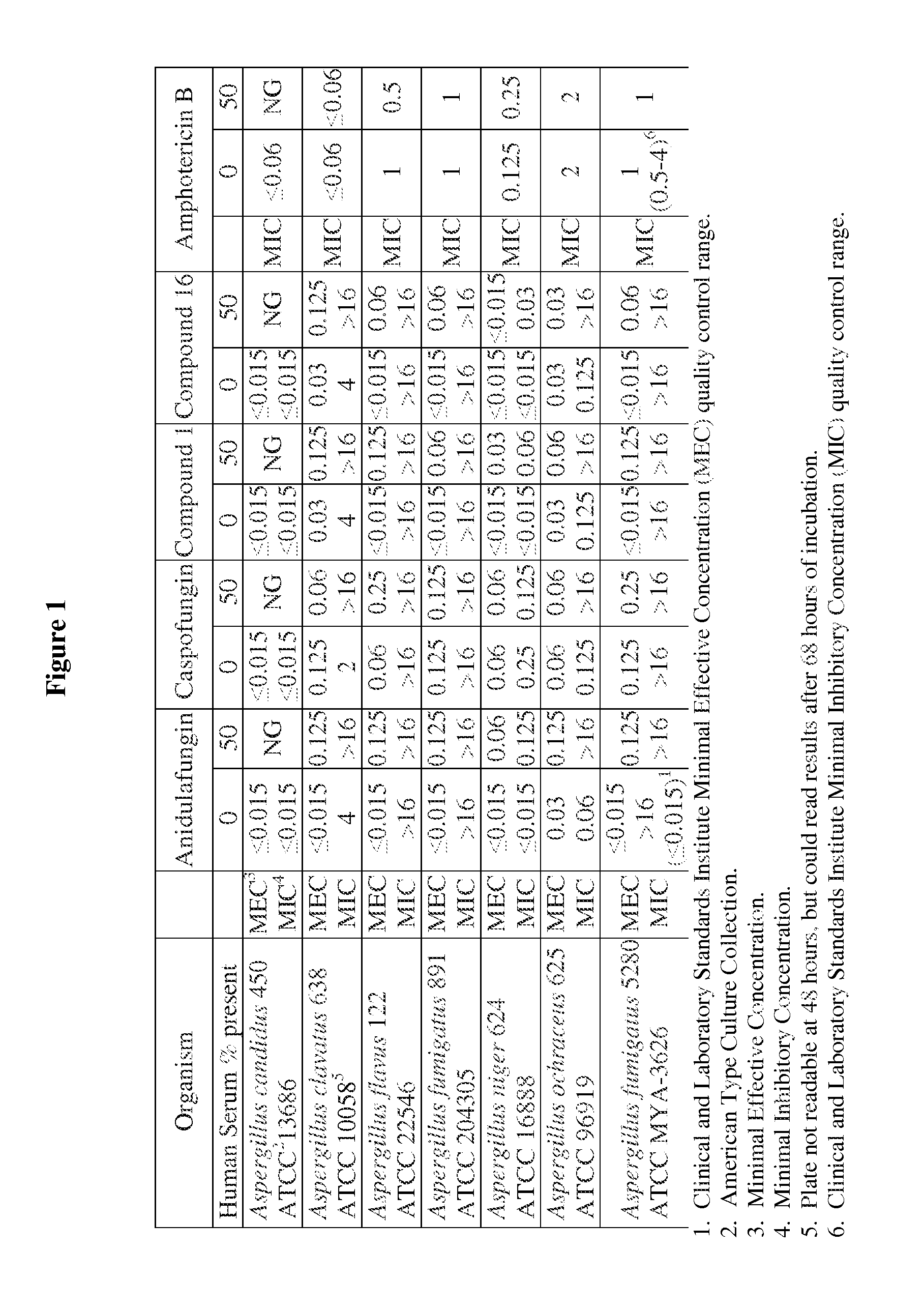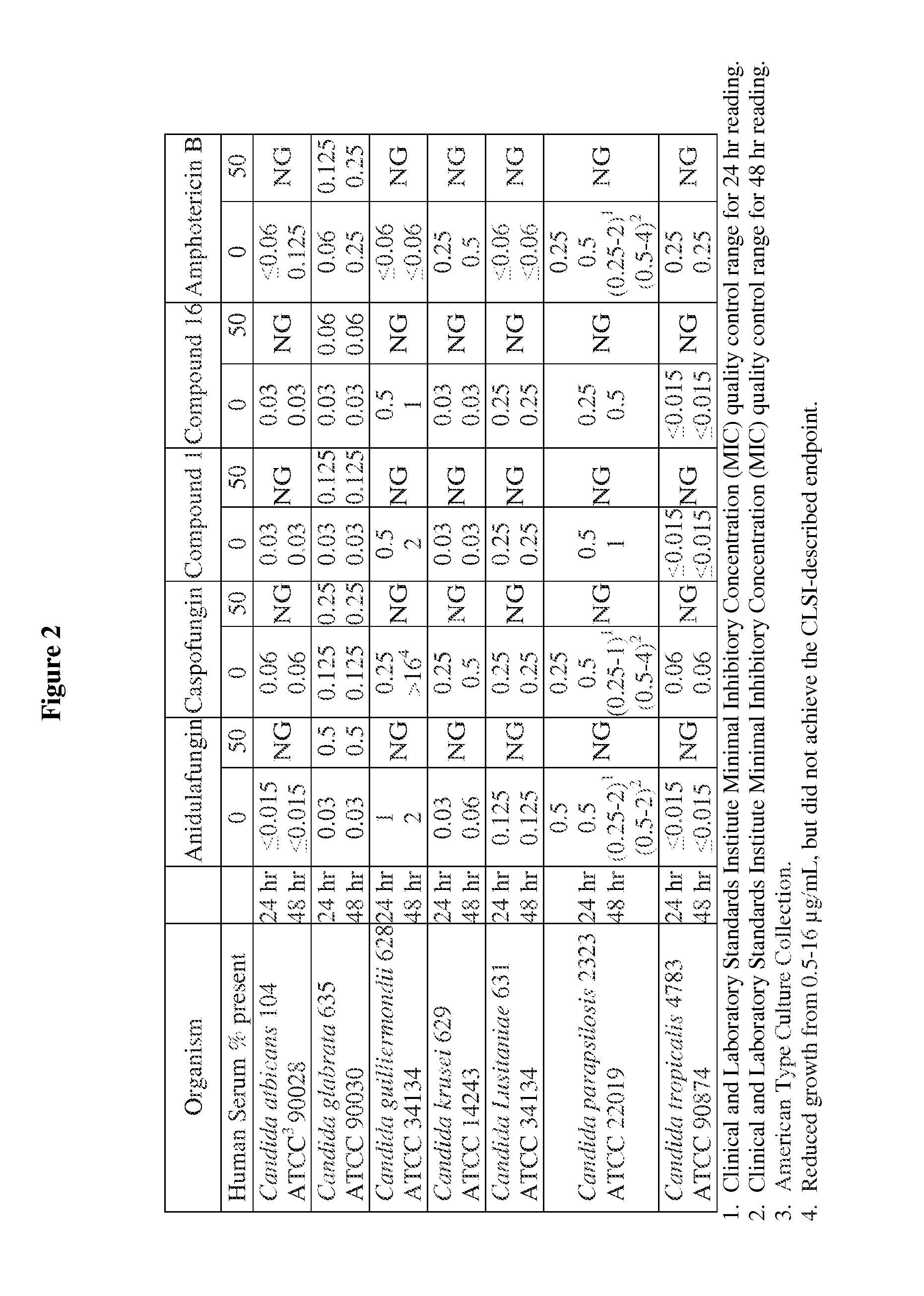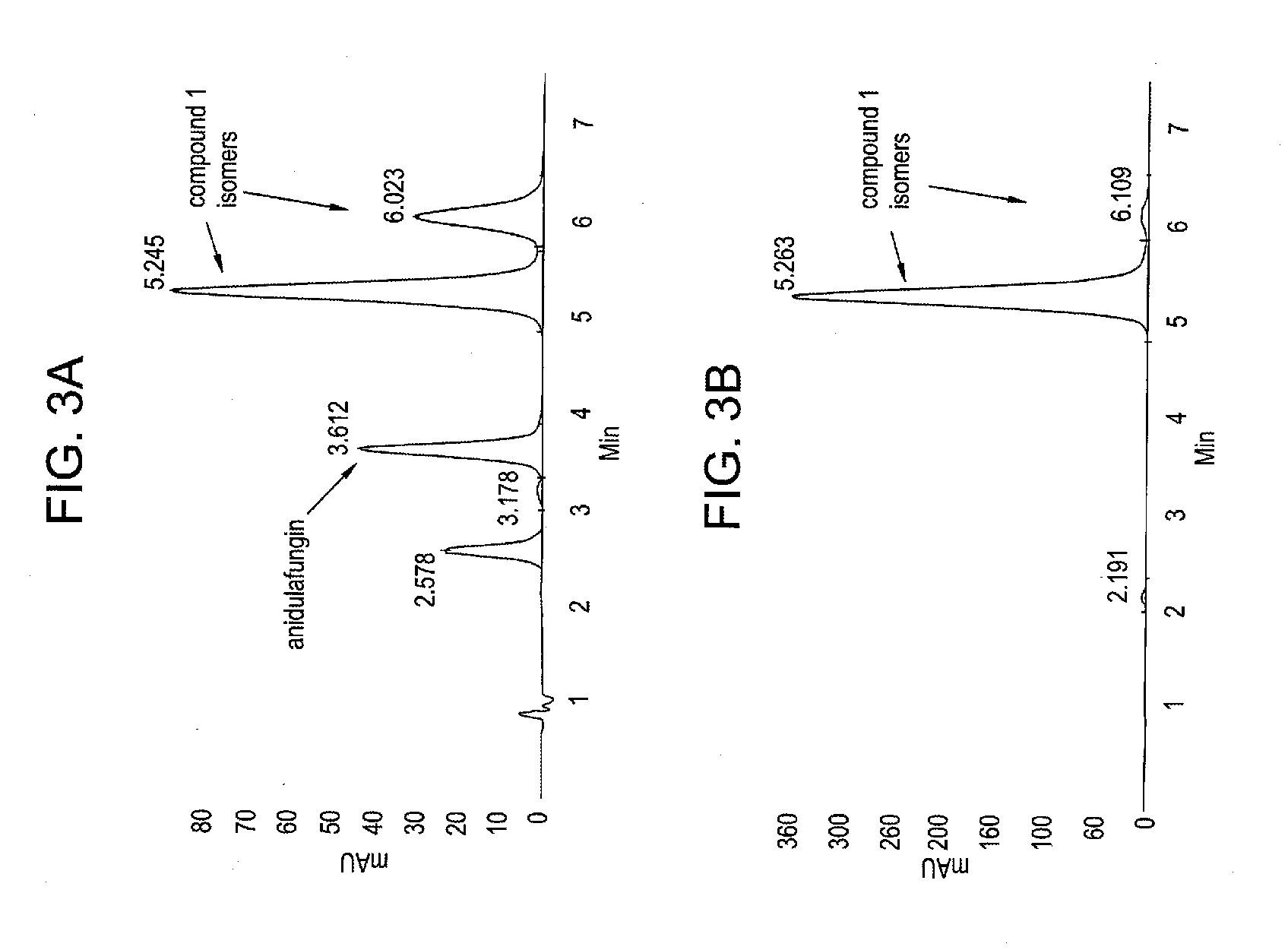Antifungal agents and uses thereof
a technology of antifungal agents and antifungal drugs, applied in the field of antifungal agents, can solve the problems of limited use, limited use of flucytosine, and continuing challenges in the development of antifungal treatment regimens, and achieve the effects of increasing therapeutic index, and increasing aqueous solubility and/or amphiphilicity
- Summary
- Abstract
- Description
- Claims
- Application Information
AI Technical Summary
Benefits of technology
Problems solved by technology
Method used
Image
Examples
example 1
Synthesis of Compound 1
[0062]
[0063]Anidulafungin (5 mg; 0.004 mmol) dissolved in anhydrous DMSO (0.2 mL) was treated choline chloride (13 mg; 0.093 mmol) and HCl (4M in 1,4-dioxane; 1.0 μL; 0.004 mmol). The resulting solution was stirred at room temperature for 2 days and heated at 40° C. for ˜8 hr then diluted with water and acetonitrile and purified by preparative RP HPLC eluting with water (0.1% TFA) / CH3CN (0.1% TFA). The product was isolated by freeze-drying to give 2.0 mg of compound 1 as a white solid. HPLC TR 10.84 min (90%). LC / MS, ESI+ m / z 1225.60 [M]+.
[0064]Two alternative synthetic protocols are provided below.
[0065]Anidulafungin (3.00 g; 2.63 mmol) was suspended in dry THF (5 ml) and treated with phenylboronic acid (386 mg; 3.17 mol). The mixture was stirred until all solid dissolved (˜30 min) then for an additional 30 min THF was removed in vacuo at room temperature. The residue was again dissolved in THF and concentrated to dryness and then suspended in dry CH3CN and c...
example 2
Synthesis of Compound 2
[0067]
[0068]N,N-Dimethylethanolamine (9.9 μL; 0.100 mmol) in anhydrous DMF was treated with HCl (4M in 1,4-dioxane; 26.0 μL; 0.104 mmol). Anidulafungin (5 mg; 0.004 mmol) was added, and the resulting solution was stirred at room temperature for 1 day and heated at 40° C. for 3 days. The reaction was then diluted with water and acetonitrile and purified by preparative RP HPLC eluting with water (0.1% TFA) / CH3CN (0.1% TFA). The product was isolated by freeze-drying to give 2.1 mg of compound 2 as a white solid. HPLC TR 10.94 min (86%). LC / MS, ESI+ m / z 1211.58 [M+H]+.
example 3
Synthesis of Compound 3
[0069]
[0070]Anidulafungin (5 mg; 0.004 mmol) was mixed with N-methyl-2-aminoethanol hydrochloride (0.1 g; 0.9 mmol). Anhydrous DMSO (0.1 mL) was added, and the resulting solution was treated with HCl (4M in 1,4-dioxane; 1.0 μL; 0.004 mmol) and stirred at room temperature for 4 days. The reaction was then diluted with water and purified by preparative RP HPLC eluting with water (0.1% TFA) / CH3CN (0.1% TFA). The product was isolated by freeze-drying to give 3.1 mg of compound 3 as a white solid. HPLC TR 10.98 min (98%). LC / MS, ESI+ m / z 1197.57 [M+H]+.
PUM
| Property | Measurement | Unit |
|---|---|---|
| pH | aaaaa | aaaaa |
| temperature | aaaaa | aaaaa |
| temperature | aaaaa | aaaaa |
Abstract
Description
Claims
Application Information
 Login to View More
Login to View More - R&D
- Intellectual Property
- Life Sciences
- Materials
- Tech Scout
- Unparalleled Data Quality
- Higher Quality Content
- 60% Fewer Hallucinations
Browse by: Latest US Patents, China's latest patents, Technical Efficacy Thesaurus, Application Domain, Technology Topic, Popular Technical Reports.
© 2025 PatSnap. All rights reserved.Legal|Privacy policy|Modern Slavery Act Transparency Statement|Sitemap|About US| Contact US: help@patsnap.com



